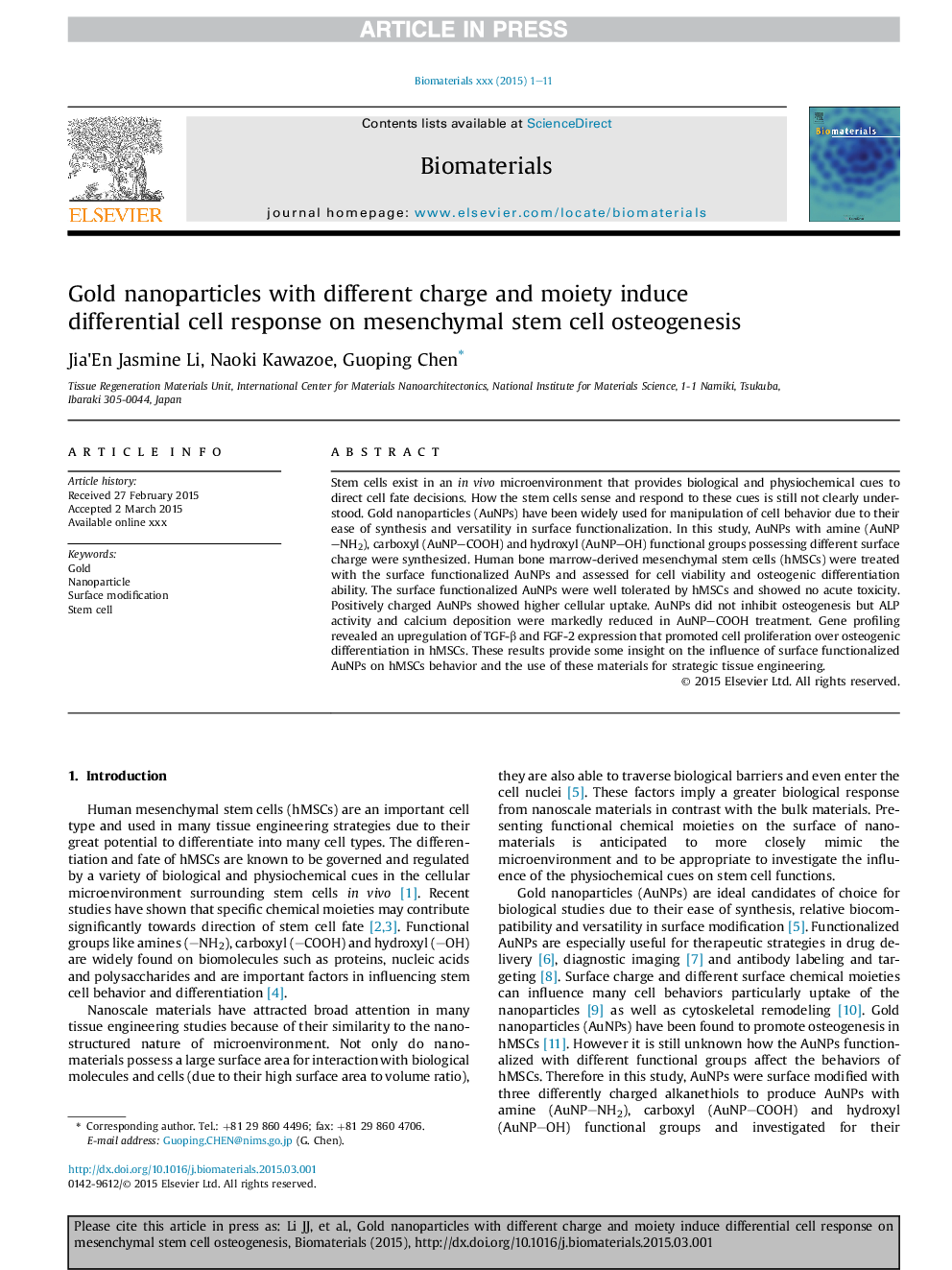| Article ID | Journal | Published Year | Pages | File Type |
|---|---|---|---|---|
| 6485746 | Biomaterials | 2015 | 11 Pages |
Abstract
Stem cells exist in an in vivo microenvironment that provides biological and physiochemical cues to direct cell fate decisions. How the stem cells sense and respond to these cues is still not clearly understood. Gold nanoparticles (AuNPs) have been widely used for manipulation of cell behavior due to their ease of synthesis and versatility in surface functionalization. In this study, AuNPs with amine (AuNP-NH2), carboxyl (AuNP-COOH) and hydroxyl (AuNP-OH) functional groups possessing different surface charge were synthesized. Human bone marrow-derived mesenchymal stem cells (hMSCs) were treated with the surface functionalized AuNPs and assessed for cell viability and osteogenic differentiation ability. The surface functionalized AuNPs were well tolerated by hMSCs and showed no acute toxicity. Positively charged AuNPs showed higher cellular uptake. AuNPs did not inhibit osteogenesis but ALP activity and calcium deposition were markedly reduced in AuNP-COOH treatment. Gene profiling revealed an upregulation of TGF-β and FGF-2 expression that promoted cell proliferation over osteogenic differentiation in hMSCs. These results provide some insight on the influence of surface functionalized AuNPs on hMSCs behavior and the use of these materials for strategic tissue engineering.
Related Topics
Physical Sciences and Engineering
Chemical Engineering
Bioengineering
Authors
Jia'En Jasmine Li, Naoki Kawazoe, Guoping Chen,
